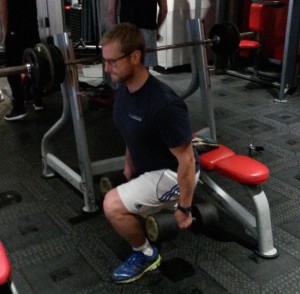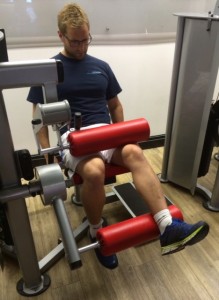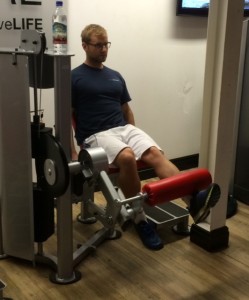Single Leg Training Tips
Why single leg training is a good idea….
A few years ago, thanks to Mike Boyle there was a lot of discussion around uni-lateral or single leg training and how it was less dangerous and more effective than standard bi-lateral leg training. His logic was that many of his athletes were carrying lower back injuries either caused or made worse by traditional back squatting.
For the record, I think Mike Boyle is fantastic and read a lot of his stuff. He’s the guy responsible for getting Daniel Sturridge (Liverpool striker) back to fitness when everyone else has failed. He’s that good.
Whilst I think Mike Boyle is great, I can’t say I share all of his views with squatting. I have programmed squats for my personal training clients for years without issue. Of course if there is an issue, be it injury, movement-based or preference then we change it, but as the old saying goes, if it ain’t broke, don’t fix it.
For the most part, I’m happy with my leg training – my legs are pretty strong, they function well and I’ve always been injury free, apart from the occasional sporting injury that has nothing to do with the gym.
Still, you can’t rest on your laurels.
I’ve mixed things up recently, adding more single leg training. The uni-lateral work is to even out any strength imbalances. It’s also made me focus on a mind-muscle connection, so I’m concentrating more on what I’m feeling during the exercises – which muscles I feel working most, how foot placement is affecting the exercise and how the single leg exercise feels different to the ‘normal’ version of it.
Here are a few of the exercises or variations of exercises I’ve added in to my single leg training…
Rear Foot Elevated Split Squats
Single Leg Curls

Single Leg Extensions
Single Arm Kettlebell Swings
There are other single leg training exercises I’ve always done, such as lunges that haven’t changed.
Benefits of Single Leg Training
The first one is the ironing-out of strength imbalances. When new clients first train with me, they realise how imbalanced their strength is because they have been relying on their dominant side all of the lives, meaning either their right or left side is significantly stronger than the other.
When you have an even strength distribution, you are reducing injury risk as there is no need for the stronger side to compensate for the weaker side, resulting in over-use or tightening of the muscles.
Single leg training forces an extra stimulus on the muscles, making them work harder than usual. As I mentioned at the top of the article, if the weaker side has been ‘hiding’ during a lift it can’t any more! Harder work = better results!
Improved mind-muscle connection. One of the most overlooked aspects of lifting is the mind-muscle connection – thinking and feeling your way through a lift rather than just absent-mindedly performing the movement. By focussing on single leg training you automatically improve your mind-muscle connection during the exercises.
Single Leg Training Tips
- Reduce the weight you use – when it comes to training, the whole is greater than the sum of its parts. In English, just because you may be able to squat 100kg, doesn’t mean you’ll split squat 50kg. Chances are even 25kg per side will be tougher than you expected!
- Slow down the movement and feel your way through the exercise. The goal is the force the weaker side to contract fully and get the most out of the exercise. This will improve the strength on the weaker side more quickly.
- Stretch! Chances are if you have a dramatic strength difference between each side, you’ll have a similar flexibility difference. Make sure you stretch and foam roll
both sides to prevent further exasperation of the problem.


